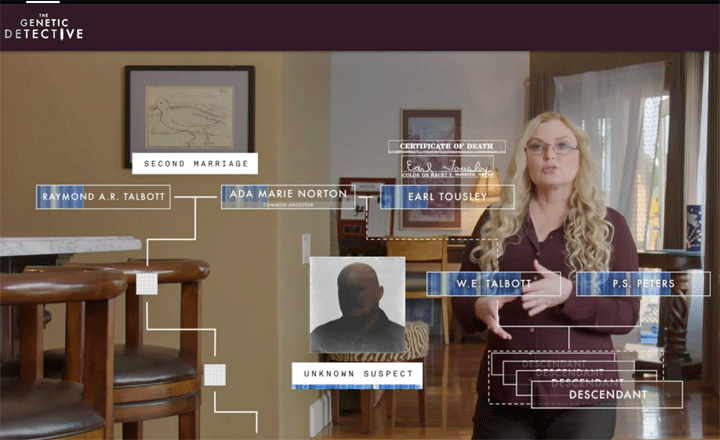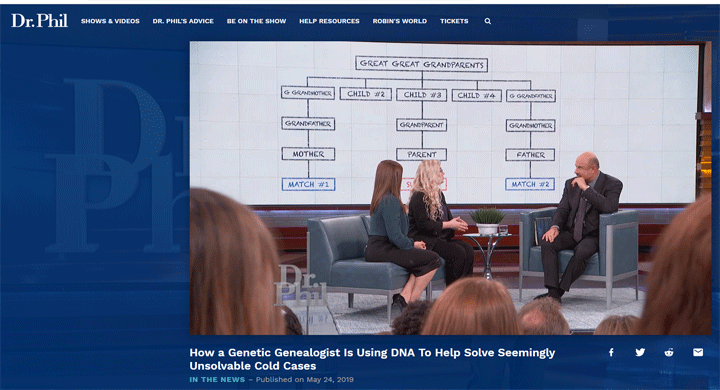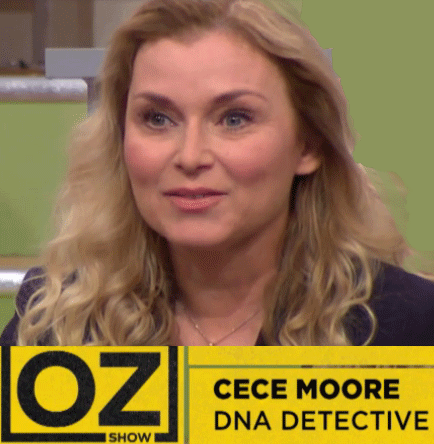I am loving watching the Genetic Detective on ABC every Tuesday night and I really hope you are too. It is a new true crime series starring CeCe Moore which demonstrates the use of genetic genealogy to catch rapists and murderers. As someone who uses similar techniques to solve unknown parentage cases, it gives me great joy to see this show and share it with family. I even announced its debut to my blog’s mailing list.

Screenshot from Episode 1, The Case of the Missing Lovebirds
If you do not get ABC in your television package, you can view it on HULU or wait a week and click here to see it on the ABC website.
It was a lecture by CeCe back in 2012 that got me started on this DNA pathway. After I solved a few of my own family mysteries, I started writing this blog and helping others with their quests. Now I even teach at the i4GG conferences she organizes every year (videos available).
What I hope my friends and family get from this show is a better understanding of how DNA sleuthing works and why they should upload their DNA results and a family tree to GEDmatch and Family Tree DNA to help solve crimes like these. What is most enjoyable for me, is that each week so far there has been a slightly different genealogy challenge for solving the case.




